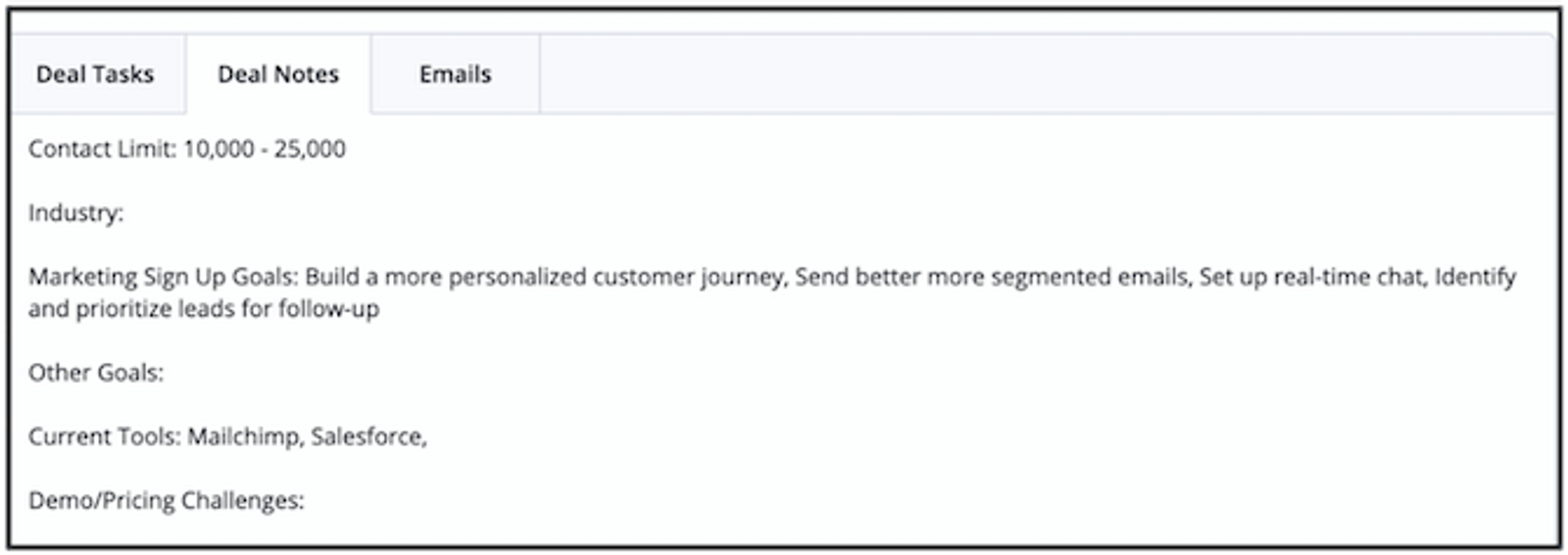Lead → Qualified lead → Customer
Makes sense, right? You’ve got leads coming in, you figure out which ones are legit, and then you acquire them as customers. Easy.
BUT
How do you know the difference between a ‘lead’ and a ‘qualified lead’? What qualifies them? Who qualifies them?
Enter the sales development representative (SDR).
In this post we’re going to explore:
- What is a sales development representative (SDR)?
- Where do SDRs fit in the sales structure?
What is a sales development representative (SDR)?
A sales development representative (SDR) is an inside sales representative who focuses on outreach, prospecting, and lead qualification. SDRs don’t focus on closing business, but on connecting with as many leads as possible and determining if they’re good customer fits.
SDRs move leads through the sales pipeline. They connect and learn about their businesses and needs. If a prospect is a good fit, SDRs schedule the next steps with sales reps higher in the organization.
The next steps could be:
- Demonstration
- Strategy call
- Fit assessment
- Consultation
- Technical call
SDRs educate, answer questions, and send resources to potential customers. They contact every lead and determine who stays and who goes.
SDRs are evaluated on the number of qualified leads they move through the pipeline. Their commission is determined by the number of deals they pass compared to their target or quota.
Where do SDRs fit in the sales organization structure?
The SDR role is usually an entry-level position. In a sales department, the SDRs are the base level –they touch every lead and filter out the ones that aren’t good fits.
After speaking to an SDR, qualified leads move to higher-level sales reps like account representatives (ARs) or account executives (AEs). In some larger sales organizations, SDRs may work alongside business development representatives (BDRs).
BDRs are usually focused on outbound lead generation and qualification where SDRs focus on inbound leads.
ARs and AEs need a steady flow of qualified leads to convert into customers. Without the SDR’s qualification process, the sales cycle takes much longer (because people focused on closing deals are talking to leads who aren’t looking to buy). Leads fall through the cracks or sign with a competitor.

What does a sales development representative do? Is being an SDR hard?
The main job responsibilities of an SDR are:
- Connect with as many leads as possible
- Educate and qualify the leads they connect with
Several things go into each responsibility, but at the end of the day what matters is the number of qualified leads SDRs move through the sales process.
Sales development representatives don’t (usually) close deals. They tee up prospects for their colleagues to close.
1. Connect with as many leads as possible
The first step is getting a lead’s attention. SDRs have a few different methods of making contact:
- Phone calls
- Emails
- Voicemails
- LinkedIn connections
- Direct mail
- Personalized video
- Social media messages
- Events
SDRs try anything and everything until they find what works.
What sets the great SDRs apart? They’re great at making first contact. One strategy that top SDRs use is customer research. Customer research breaks down into 2 categories:
- Market research
- Individual prospect research
Market research is the process of defining a target audience. It’s pinpointing the ideal customer and knowing what problems they have that you can solve. This information guides SDRs in their outreach and conversations.
Individual prospect research is the process of learning about a specific lead. Preparation gives confidence and shows prospects that the SDR has taken the time to understand them. It builds rapport and credibility.
Social media sites like LinkedIn make it easy to do research. These sites give information about the business and the prospect’s role and responsibilities.
Beyond social media, a Google search gives newsworthy information about their business and a visit to their website fills in any holes.
A company's website tells the SDR key information like:
- Who they are
- What they do
- How they do it
- Why they do it
- Where they’re located
Browser extensions (like those below) can help SDRs tap into information that would otherwise be hidden:
SDRs who sell software can use this information to understand where the product they offer fits in with the other software the prospect is using. Other SDRs can still benefit from data enrichment tools (like ClearBit).

A sales cadence, or a repeatable sequence of sales activities for outreach, gives SDRs and other sales team members a framework to follow and eliminates the “free-for-all” mentality.
Sales cadences keep SDRs organized. Organization is critical for salespeople, especially when managing a large volume of leads.

Successful SDRs personalize their messages.
- They use the prospect’s name in voicemails and emails
- They reference their research
Personalized emails yield 6 times the revenue and transaction rates than non-personalized emails.
The final piece of SDR outreach is keeping the CRM up to date. The customer relationship manager (CRM) is the source of truth for salespeople. The CRM is the tool that manages sales leads.
A CRM holds customer and prospect information. Prospect information like:
Outreach
- Phone calls
- Voicemails
- Conversations
- Emails
Customer status
Prospect
Marketing qualified lead (MQL)
Sales qualified lead (SQL)
Order pending
Customer
There are 3 reasons for SDRs to keep the CRM up-to-date:
Organization
- Know where they stand with every lead
- Log details of every interaction
- Follow up at the right time
- Don’t let anything fall through the cracks
Data analysis
- Accurate data means accurate forecasting
- Reliable customer information refines the sales process
Compensation
- Prove their role in customer acquisition
- Get the deserved credit for their efforts

2. Educate and qualify the leads they connect with
The SDR qualification process has two components:
- Learning
- Educating
SDRs learn from their prospects before they send them ahead to the next step in the sales process.
SDRs learn about a prospect’s:
- Business processes
- Do their processes support your product or service?
Sales reps are trained on what makes a good customer fit. If a prospect’s information matches up with the profile of a good customer, then the prospect moves forward.
SDRs also educate by answering a prospect’s questions. They answer questions about:
- Capabilities
- Can your product or service do what they need?
Educating prospects is an exercise in overcoming objections. Sales reps have to answer questions in ways that educate and entice the prospect.
Qualification has one goal – to determine customer fit.
- Size
- Budget
- Timeline
- Needs
If they fall in the sweet spot, then the prospect is qualified and is ready to move ahead. This is the main responsibility of an SDR. It decides the number after the $ in their monthly commission check.
What skills should a sales development representative have?
To be successful, sales development representatives need skills in 4 areas:
- Product knowledge
- Organization and time management
- Resilience and determination
- Conversational skills
1. Product knowledge
It’s hard to answer questions about something you don’t understand. It’s even harder to sell that thing if you can’t explain the benefits or the features.
Successful SDRs never stop learning about their product or service. They have to be knowledgeable about what they’re selling. This doesn’t happen overnight, and the learning process doesn’t end.
Try it now, for free
How do you become an expert on your product?
In-house product training is great for the basics, but sales reps need to go deeper to be effective.
- Ask veteran SDRs and others on the sales team questions
- Asking colleagues is a great way to learn about the product, but also how to talk about the product.
- When veteran sales reps teach new sales reps, their understanding grows too.
2. Organization and time management
SDRs have a lot of leads to get through, and a lot of details to keep straight. Strong organization and time management skills are a must.
The best SDRs have a system to keep everything straight:
- They use tools like CRM and online notes to organize their leads
- They use naming conventions to prioritize leads
- They set follow-up tasks for themselves, and they follow up
- They’re on time, every time
The most important aspect of SDR organization is the repeatable process. The sales cadence helps, but the best SDRs create a system that they can repeat for every lead.
When a new lead comes in they know what they have to do and what order to do it in.
This might look like:
- A new lead comes in
- SDR scans the lead for important details
- Name, email address
- Job title
- Location
- Key goals or reasons for becoming a lead
The process is refined with time and each repetition. With organization comes time management. When work is organized, you know what you have to do and when you have to do it. Time management follows from there.
If you can’t fit it all in, iterate your processes as needed.
3. Resilience and determination
SDRs hear “no” more than the average human. They’re good at shaking it off and pushing forward. A lead that isn’t qualified isn’t a loss – SDRs qualify prospects, so turning down people who aren’t a good customer fit is part of the job.
SDRs have a strong desire to improve. To push past “nos,” SDRs use:
- Voicemail scripts
- Email outreach templates
- Tone of voice
- The wording of certain questions
Effective SDRs self-analyze. They know their strengths and weaknesses and work on them. They’re willing to try something new and to be uncomfortable if it means improving.
SDRs are coachable. Sales managers and sales leaders, like SaaS sales advisor Justin Welsh, want their reps to perform and have suggestions.
Coachability is a skill — instead of taking feedback personally or getting defensive, they’ll say,
- “I’ll try that.”
- “I never thought about it like that.”
- “What can I do?”
- “How would you improve this area?”
And then they follow up. Just like they would with a sales lead. Strong sales reps put suggestions into practice, work on what was suggested, and take advice.
4. Conversational skills
The phone is the portal to an SDR’s paycheck. It makes them money if they know how to use it.

Sales conversations are high stakes. Say the right things and your paycheck grows. Say the wrong things and the prospect wants to talk to your manager. Yikes.
It’s a common misconception that sales reps do all the talking. In reality, the best sales reps listen. The breakdown of a sales conversation should be 70% listening and 30% talking by the SDR.
Active listening is key. Active listening means sales reps:
- Concentrate on what the prospect says
- Listen until the prospect finishes
- Don’t interrupt
- Take a moment to understand
- Respond and remember what is being said.
Ideally, prospects feel like they’re having a conversation. They feel comfortable and provide more information.
Sales reps need to qualify leads and get certain questions answered. But sales calls are conversations, not interviews. Prospects often need a few moments to collect their thoughts – and great SDRs give them those moments by consciously pausing (for at least 3 seconds) before speaking again.
Long pauses can feel like an awkward silence to the sales rep, but the prospect feels like the SDR cares about their answer and about their business. They have time to say what they’re really thinking and feel like those thoughts are heard.
Some conversations involve asking hard questions. An SDR might have to ask a question that speeds up their heart rate.
- “Is this project a priority or should we talk down the line when it is?”
- “What are your budget expectations for this? Do you have funds allocated for this?”
- “Are you the decision maker on this?”
- “What exactly does your business do?”
Sometimes (most times) the prospect doesn’t answer the phone. SDRs need to leave voicemails that are effective in getting a callback.
Voicemails are tricky. You have 20 seconds or less to:
- Tell them who you are
- Tell them why you’re calling
- Be memorable
Leaving a good voicemail takes practice. Great SDRs start by rehearsing a script until it sounds natural, like the way they would talk. Then, as they try it out with prospects, they make tweaks to fit their own personal style.
In addition to voicemail and phone skills, SDRs write a lot of emails. Email writing also requires practice and authenticity. The best emails use conversational language.
- Personalized
- Prospects are twice as likely to respond when emails are personalized.
If you’re having trouble writing emails, here are some examples for inspiration!
How do I become a successful sales development representative?
SDRs primarily do 2 things:
- Connect with as many leads as possible
- Educate and qualify the leads they connect with
They need skills in 4 areas to do them:
- Product knowledge
- Organization and time management
- Resilience and determination
- Conversational skills
Here are 3 tips to find success as a sales development representative:
- Always be… learning! Reach out to other departments to learn more about your product. Learn how they talk about it. Read about your industry. Read the reviews of your company. Talk to other sales colleagues and learn from them!
- Pay attention! Take note of common questions and objections you face and prepare for them. Notice which emails and voicemails get responses. Pay attention to things that your best leads have in common. Identify them in your prospects and prioritize!
- Create, repeat, iterate. Create a repeatable process that works for you. Pay attention to where the process works and doesn’t work. Iterate and change it up if you feel stagnant. You can always improve!








